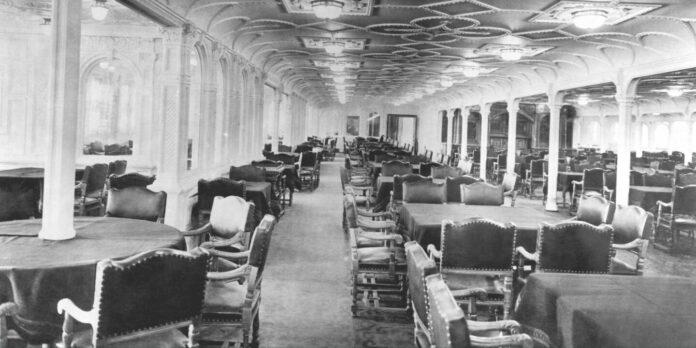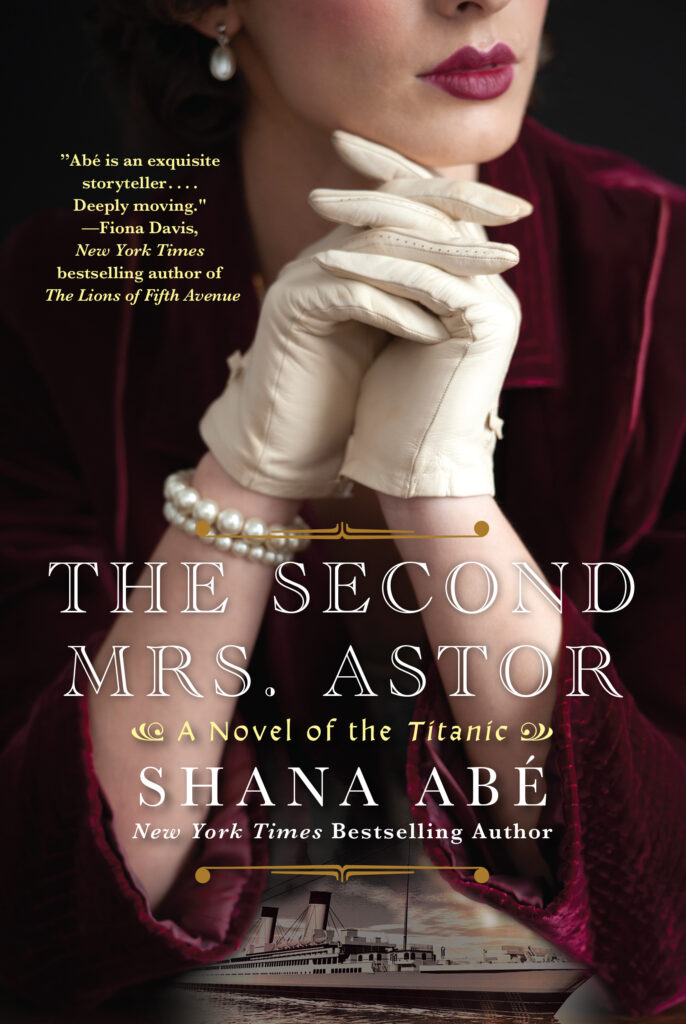You already know the ending. Yet, like watching a performance of Romeo and Juliet, you can’t help but think of all the ways the tragedy might have been averted. What if, what if…
What if the lookouts had had binoculars, so they could have spotted the iceberg sooner?
Binoculars for the lookouts in the crow’s nest were not standard equipment at the time, although they were becoming used more and more. As it happens, there were binoculars for the lookouts on Titanic, but they had been locked in the second officer’s desk by a departing officer before the ship had sailed, and no one knew (including the second officer on board).

What if someone had warned Captain Smith about icebergs in the area?
Yeah, someone did. Another ship passing through the ice field wired a warning to Titanic, but apparently Captain Smith didn’t read the Marconigram, just pocketed it and later passed it on to Bruce Ismay, Chairman of the White Star Line (who definitely did read it). On top of that, the wireless operator of the Californian, another ship in the area, tried to tap out a warning to the wireless operator on Titanic, but it was late at night and Titanic’s operator was so overwhelmed with the backlog of passenger messages he was transmitting to the mainland that he told the Californian operator to “shut up.”
What if there had been a ship closer by than the Carpathia to come to the rescue?

Aaaand…there’s the Californian again, hours closer to Titanic than the Carpathia. After sending out the warning about being surrounded by ice (and being told to shut up), the Californian’s wireless operator turned off his equipment and went to bed. So the Californian never received the CQD (distress) signal sent out by Titanic a short while later. However, several of the ship’s crew did report seeing Titanic’s distress rockets, although they couldn’t hear them. Why the Californian’s captain then did not at least wake his wireless operator to find out what was going on remains unclear to this day. Some reports say that the captain tried to communicate with Titanic via Morse lamps (which would have been ineffective due to the weather and the distance), and some say he asked about the color of the rockets (white), but as they did not match the color of his own ship’s line, he chose not to respond. The Californian’s captain had a variety of excuses as to why his freighter did not rush to aid Titanic, and his narrative was considered, in general, to be unreliable.
The Second Mrs. Astor: A Heartbreaking Historical Novel of the Titanic
Inspired by the real-life Titanic love story between America’s richest man and teenaged beauty Madeleine Force.
He was American royalty, the richest man in the country and Fifth Avenue scion of the Gilded Age. She was a vivacious teenage socialite suddenly and unexpectedly thrust into fame simply for falling in love with a famous man nearly three decades her senior. Brought to life in this sweeping work of historical fiction by New York Times and USA Today bestselling novelist Shana Abé, the love story between Jack Astor and Madeline Force, from scandalous courtship to tragic honeymoon aboard the Titanic, which made them the most famous couple of their time…
A mesmerizing novel of historical fiction from New York Times bestselling author Shana Abé, The Second Mrs. Astor tells the sweeping real-life Titanic love story of Madeleine Force, who became the teenaged bride of one of the world’s richest men, and triumphed over tragedy and heartache.
“I won’t begin with our ending, which everyone in the world knows anyway. Our beginning, however, belonged only to us…”
Madeleine Talmage Force is just seventeen when she attracts the attention of John Jacob “Jack” Astor. Madeleine is beautiful, intelligent, and solidly upper-class, but the Astors are in a league apart. Jack’s mother was the Mrs. Astor, American royalty and New York’s most formidable socialite. Jack is dashing and industrious–a hero of the Spanish-American war, an inventor, and a canny businessman. Despite their twenty-nine-year age difference, and the scandal of Jack’s recent divorce, Madeleine falls headlong into love–and becomes the press’s favorite target.
On their extended honeymoon in Egypt, the newlyweds finally find a measure of peace from photographers and journalists. Madeleine feels truly alive for the first time–and is happily pregnant. The couple plans to return home in the spring of 1912, aboard an opulent new ocean liner. When the ship hits an iceberg close to midnight on April 14th, there is no immediate panic. The swift, state-of-the-art RMS Titanic seems unsinkable. As Jack helps Madeleine into a lifeboat, he assures her that he’ll see her soon in New York…
Four months later, at the Astors’ Fifth Avenue mansion, a widowed Madeleine gives birth to their son. In the wake of the disaster, the press has elevated her to the status of virtuous, tragic heroine. But Madeleine’s most important decision still lies ahead: whether to accept the role assigned to her, or carve out her own remarkable path.







